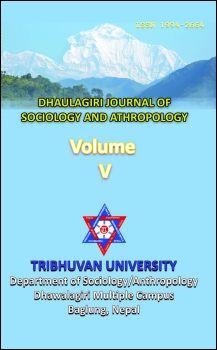Crops and Culture: Dispersal of African Millets to the Indian Subcontinent and its Cultural Consequences
DOI:
https://doi.org/10.3126/dsaj.v5i0.6354Keywords:
African millets, dispersal Indian subcontinent, cuisineAbstract
In this paper I will discuss the spread of African crops to the Indian subcontinent. The spread was probably related to the Indus civilizations trading network in the Indian Ocean during the late 3rd millennium BC. It was at this time African food plants, the so-called big millets were dispersed across the African savannah to the horn of Africa and further to the Indian sub-continent. The big millets were cultivated as monsoon summer crops complementing the existing barley/wheat winter crops. The African pot/porridge cuisine was added to wheat/barley oven/bread cuisine. Recent study in Nepal shows that the African crops are cultivated today on marginal agricultural land in the foothills of Himalaya. We will look at Nepal as an example of the production and consumption of African big millets. The crops are processed into porridge and beer, and this cuisine is a food tradition similar to the pot and porridge cuisine we find in sub-Saharan Africa.
DOI: http://dx.doi.org/10.3126/dsaj.v5i0.6354
Dhaulagiri Journal of Sociology and Anthropology Vol. 5, 2011: 1-30



